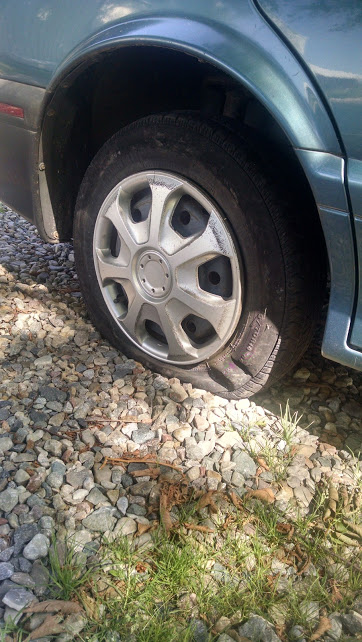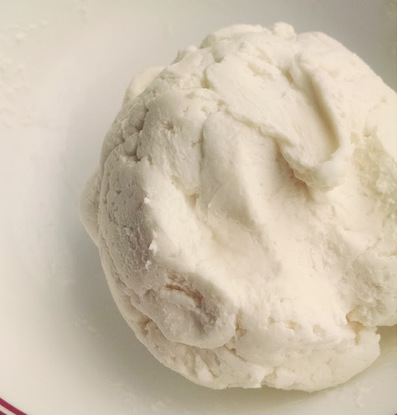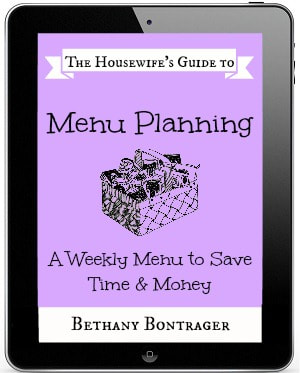I ended out the season with a tidy $509.66 in net profits (an average of $50.97 per week- TWICE as much as last year). This was $23.30 more than I made last year, despite the fact that I only went to ten markets instead of 21.
Beneficial Changes in 2016:
1. Drove a small car instead of a large truck. This made parking, packing up and unloading so much easier. It allowed me to go to the market without a helper more often, and it also saved $3.00 per week on gas.
2. Only sold 4-5 different baked goods every week. I made one type of cookies, one type of granola, one type of pie/dessert, and one or two different types of bread. This cut down on baking time, and made it easier for people to chose what they were going to buy.
3. Simplified my booth setup. By this I mean: no brochures, signs or display shelf. Because I made only one kind of cookie/bread/pie, etc., I didn't have to put a separate sign by each item. The only little signs I had were for books, jam, eggs and produce.
4. Simplified some of my packaging, to make logistics move faster. I stopped cutting fancy corners for my labels, and started using actual granola bags instead of twist tie bags. The granola bags cost about $0.25 each, and the smallest package I could buy was 50 bags. I think this was a great investment because I noticed a lot more granola selling this year. On the other hand, I bought a huge box of pie boxes (150) for $0.25 each, but only used 26 of the boxes (and 8 of them were wasted because the product didn't sell). The boxes made transportation easier and improved the appearance of my goods, but I don't think they actually increased sales, plus they added on additional $0.25 of cost onto each item I made. Often I would spend just as much on packaging for a pie ($0.25 for the box and $0.65 for the tin) as I would spend on ingredients. I am going list my remaining pie boxes on Ebay to see if I can get some of my money back. If they don't sell, I will just keep on using them, but I probably won't buy any more. Lastly, I tried using adhesive kraft paper for jam labels. While it did improve the appearance, the labels were so big that it was hard to see the contents, and the brown color made them harder to read. The labels were also expensive and a pain to format, print and cut out. Next year I will not do the adhesive labels.
5. Took a summer break. I took half of June and all of July and August off this year, with the exception of one week in July. I really enjoyed this time off and it helped me get excited for the fall "season" of market instead of just being burned out.
6. Tried a different market. I learned that even if a market is smaller, you can still net the same amount if costs are low enough. Next year I am going to switch markets to help lower costs.
7. Sold vegetables, fruit and eggs. These items have a 100% profit margin*, and were not much extra work to bring. The fruit and vegetables took about an hour to prepare the night before, whereas the baked goods took all afternoon, plus some.
8. Sold more jam and soap. These were some value-added items I chose to sell from my little farm. If fruit didn't sell at the market, I made it into jam and sold that later. The soap was made from goat's milk, animal fat that I salvaged, and only a few other ingredients. Both the jam and soap had a pretty high profit margin (80%) compared to the baked goods (50%-75%).
Farmers Market: An Inefficient System?
One thing I've realized after two years of selling is that you can't make a fortune at the farmers market. In fact, I can't even make minimum wage. Even though I cut my working hours by a LOT this year, I was still working 6-7 hours both on Friday and Saturday. My average net profit ($50.00) divided by average working hours (13 hours per weekend), equals $3.84 per hour.
In talking with other vendors, I learned that our market and others in the area have done worse overall in 2016 than in previous years. Though there are plenty of people walking around, many of those people are not shopping. The farmers market has become more of a social event than a shopping one. And honestly, I can't really blame the consumers. In order to make half of minimum wage selling my wares, I have to charge a high price for the things I make.
And so it starts a vicious cycle: vendors don't sell because they can't make money, and shoppers don't buy because things are too expensive. Not everyone will agree with this, but that is just how I see it. Here are two big reasons I am not making enough at the farmers market:
Problem #1- Costs: If I could take home ALL of my profits- about $100.00 per week- I would be more excited about selling. I would also be making $7.69 per hour. The problem is that I have to pay for gas ($3.00), booth fee ($20.00), costs of goods sold (about 20% of gross sales) and the cost of goods I don't sell. As you can see, out of my $100.00, $43.00 is automatically subtracted. Even more is subtracted if it is a rainy day, or if I didn't sell as much, or if I sold less produce (high profit margin) and more baked goods (lower profit margin).
Problem #2- Rainy Days: I learned in my first year that cold and rainy days cut profits by up to 50% or more. It is not worth my time to go to a market on a rainy day, but many markets need to know MONTHS in advance which weeks you will be there. So I pick my weeks, and half of them could be ruined by the weather. It's understandable that many markets want to know ahead of time who will be coming, but selling during rainy days makes it even harder to earn money.
One big reason I have for attending a different market next year is the flexibility. Some of the markets I'm looking at don't require you to sign up months ahead of time. I would be able to look at the weather on Friday, and tell the market master whether I was coming or not on Saturday. I could avoid a lot of rainy/miserable days this way and keep my hourly wage above $5.00 per hour.
Thoughts for Next Year
One big problem with my current market is booth fee, which is $20.00. By attending a smaller market, I could be saving $15.00 per week. That extra $15.00 could mean an extra $1.15 per hour, or a 29% pay raise. A market that is closer will also require less gas ($1.00 savings) which will bring my hourly wage up as well.
The other problem is what I'm selling. This summer I sold about 60% baked goods and 40% farm and garden products. Here are the profit margins for some of my baked goods:
White Bread: 94%
Quick Bread: 84%
Fruit Tart: 77%
Monster Cookies: 74%
Fruit Cobbler: 58%
Granola: 56%
Fruit Crisp: 52%
On a given week, I could easily sell $18.00 worth (6 dozen) of eggs and keep 100% of the profit to myself. In order to earn the same amount with zucchini bread, however, I would have to sell $21.50 worth of goods. In order to earn the same amount with granola, I would have to sell over $32.00 worth of products. An easy way for me to cut down on time AND costs would be to sell just produce instead of baked goods.
My big changes for next year will be 1) selling fewer baked goods in proportion to farm products, and 2) selling at smaller markets. The $20.00/wk. market is just not sustainable for me. Even after two years, I am still earning less than my $4.00/hr. "housewife wage". I don't regret doing the market this year, but $3.84 per hour is still not enough to make it worth my time.
I still believe, though, that selling at a farmers market can be a good side-hustle for the housewife with an empty pocketbook. Even $50.00 per week can go a long way for the frugal lady.
Reasons to Sell at a Farmers Market:
1. It only takes one day (one or two half days) per week.
2.You can sell things that you're going to make anyway (bread, jam, garden produce, soap, etc.)
3. You can have children help with the production, packaging, and even selling if they're old enough.
4. You don't need any special skills, as opposed to giving music lessons or doing photography for people as a side-income.
5. Relatively small one-time investment: if you have to buy a tent and table, it will cost about $250.00 to get started. However, you could always find a cheap tent, used tent, borrow a tent or not use a tent at all.
If you would like to try doing a farmers market for the first time, I would recommend investing $5.00 in the ebook version of my book, One Season of Farmers Market. If you don't have a Kindle, download the free Kindle app on your desktop or phone, and read it that way. I guarantee that you'll save 10x what you paid for it. If you DO end up selling at a market, you won't waste money making a bunch of stuff that doesn't sell. If you DON'T end up selling at a market, you'll save yourself the cost of "learning the hard way" and investing $250.00 into stuff you'll never use again. With my book, you'll save either way!! And that is my shameless plug.
Til next time,
-Bethany
*You do have to pay for chicken feed in order to produce eggs. However, I have regular out-the-door egg customers who provide enough income for the care and keeping of the chickens.




























 RSS Feed
RSS Feed





